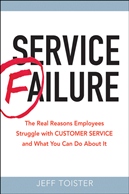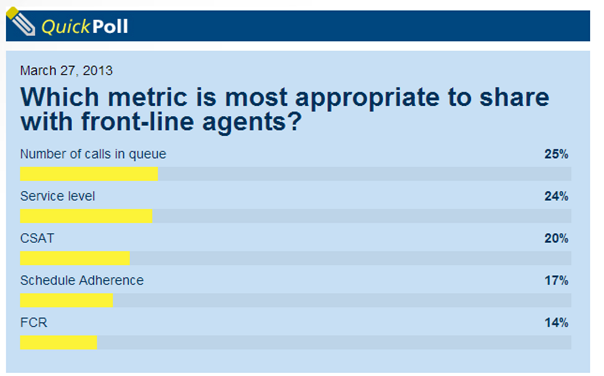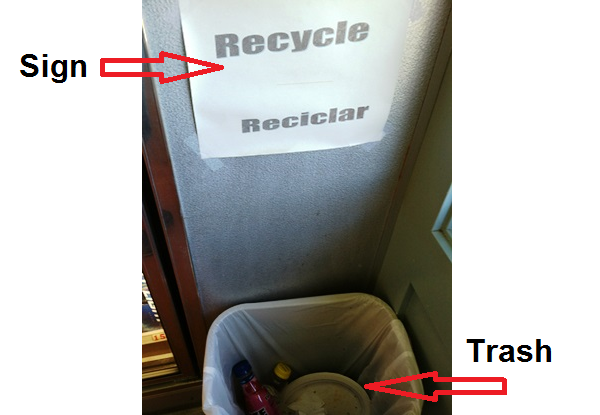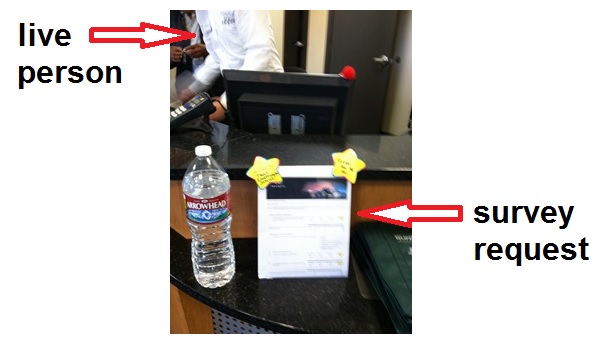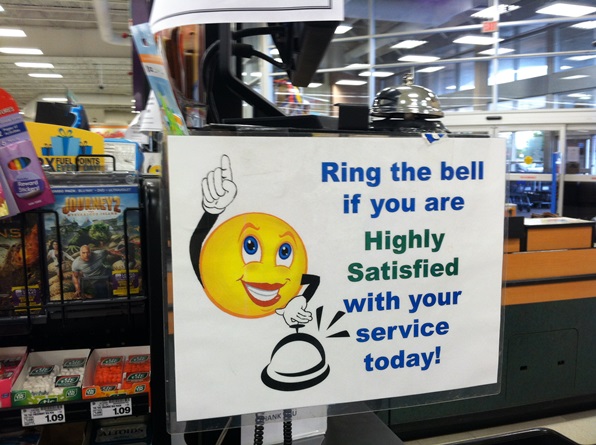Speed kills first contact resolution
 Jeff Toister
Jeff Toister  Tuesday, May 14, 2013 at 9:00AM |
Tuesday, May 14, 2013 at 9:00AM | Nobody likes having to contact customer service for help resolving a problem. It’s doubly aggravating to contact them a second time because the issue wasn’t fixed. I can’t even tell you how frustrating it is to contact customer service 16 times on one issue.
First Contact Resolution, or FCR, measures the percentage of customer problems that are resolved on the very first contact. It doesn’t take a rocket scientist to figure out that a high FCR rate is a good idea. Customers are happier and companies are able to work more efficiently.
Surprisingly the metric has been slow to catch on. One factor holding back its adoption is speed.
A recent poll conducted by the International Customer Management Institute (ICMI) found that FCR ranked fifth among metrics shared with frontline call center employees. Two speed-based metrics and another efficiency-based metric ranked ahead of it.
The two most popular metrics for front line employees tell call center agents when to work faster. Many reps will speed up their interactions when there are a lot of calls in queue. This in turn allows them to improve service levels (the percentage of calls answered within a set amount of time).
Schedule adherence is an efficiency metric. It calculates the degree to which call center agents are working their assigned schedule. Agents may be less likely to spend time fixing a difficult problem if they feel pressured to immediately take the next incoming call.
The impulse to work faster can hurt FCR. Employees take short cuts, speed up their interactions, and try to multitask their way through an avalanche of work. All of this can make it harder to spot the important details that are the difference between First Contact Resolution and Endless Back-and-Forth. You can see an example of this in my breakdown of an email service failure.
I recently attended the Contact Center Conference & Expo where FCR was one of the hot topics. However, I was only talked to a few people who were actually measuring FCR in their contact center.
One of those people was Kathie Gerrard from MTS Allstream, a business communications provider in Canada. Gerrard told me that their FCR initiative really took off when they stopped emphasizing another speed-related metric, Average Handle Time (AHT).
“A few years ago, we identified FCR as a key performance indicator and began to set improvement targets. Although we’ve seen improvements in our FCR results, we’ve found that monitoring average handle times contradicts FCR. AHT metrics encourage reps to shorten the length of the call instead of focusing on resolving the customer’s issues.”
MTS Allstream still tracked AHT behind the scenes even after they stopped emphasizing it with their reps. Gerrard told me that they haven’t seen a significant increase in AHT since shifting their focus to FCR. Her observations suggest that the extra time required to resolve a customers’ problem completely is often negligible. It’s the pressure to wrap things up quickly that actually causes the service failure.
Gerrard also told me MTS Allstream had widespread executive support for their FCR initiative. This isn't always the case. Another call center manager I spoke to at the Contact Center Conference & Expo told me his executives resisted moving to FCR because they had invested so much money in technology that measured speed and efficiency. They understood and felt comfortable with metrics like calls in queue and average handle time.
How do you get your executives on board? Show them the money. Here are a few ways that FCR can lead to financial results.
- Reduce Waste: 23 percent of the average call center's budget goes to repeat calls. (Source: SQM Group)
- Increase Revenue: 66 percent of customers will spend more for excellent customer service. (Source: American Express)
- Retain Customers: 19 percent of customers are at risk of leaving if their problem isn't resolved on the first call. (Source: SQM Group)
Slowing down to speed up is counter-intuitive, but the numbers don't lie. Speed can kill first contact resolution.



